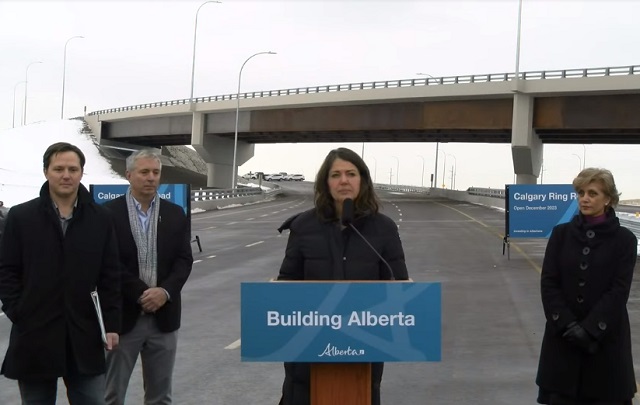Calgary
A New Solution To Clean Energy That Creates Jobs Is Closer Than You Think

Grant Strem grew up in Calgary, where he attended the U of C to pursue a degree in Geology, followed by a Masters in Geology and Geophysics, specializing in Reservoir Characterization. A former oil and gas sector employee, Grant’s interest in science, space propulsion systems and extreme oxidation processes led him to his current position as Chairman and CEO of Proton Technologies Inc.
A local Calgary company launched in 2015, Proton Technologies is currently at the forefront of tech development in the global energy sector. Unearthing the latest in green energy, Proton’s team of experts is exploring a new approach to clean, affordable energy called Hygenic Earth Energy (HEE). This technology has the potential to alter the course of the climate crisis while simultaneously revitalizing the Canadian oil and gas industry.
According to Proton Technologies, a significant amount of oil remains in the ground following production due to a number of factors that make it inaccessible or too expensive to recover. With Hygenic Earth Energy, these abandoned reservoirs, whether they be light or heavy oil, gas, or coal beds, will be repurposed to produce pure hydrogen with absolutely zero emissions.
Hygenic Earth Energy is the result of a Proton Technologies Inc. patented technology in which oxygen is injected into petroleum reservoirs causing a chemical reaction that releases energy in the form of heat. This thermal energy then breaks apart existing water molecules, separating hydrogen from oxygen, which then passes through a specialized hydrogen filter known as a palladium membrane. As a result of the membrane, all other gases remain trapped underground, meaning this process effectively yields pure hydrogen with zero emissions, at a fraction of the cost. While the majority of hydrogen production currently comes from Steam Methane Reformers and ranges between $2 and $3 USD/kg, Proton estimates they will be producing hydrogen for the chemical industry, as well as transportation and power generation purposes, for less than $0.50 USD/kg once systems have been fully optimized.
According to Dr. Ian Gates, Department of Chemical and Petroleum Engineering, University of Calgary, HEE has the potential to “change the entire basis for energy on this planet”.
This technology offers a timely and unique compromise between political concerns of the right and the left in Canada. As an economically viable, zero emissions source for clean energy, the potential impact on the climate crisis is extensive. At the same time, if implemented at a large scale, this technology could act as an adrenaline shot to Canadian oil and gas by repurposing abandoned wells and adding jobs to the industry. According to Strem, “All the same skills are needed – from geophysicists to pipefitters and rig hands,” and infrastructure is already in place to house workers and facilitate a relatively smooth transition.
“Nothing will be as cheap as our method for producing energy,” says Strem, “we fully intend to change the world.” Proton Technologies Inc. is currently testing Hygenic Earth Energy technology in Saskatchewan, and believes they will see their first hydrogen sales within the year, with the construction of their first oxygen plant beginning by the end of 2020.
For more stories, visit Todayville Calgary
Alberta
Building a 21st century transit system for Calgary

From the Frontier Centre for Public Policy
Calgary Transit is mired in the past, building an obsolete transit system designed for an archaic view of a city. Before the pandemic, transit carried 45 percent of downtown Calgary employees to work, but less than 10 percent of workers in the rest of the Calgary urban area, showing that Calgary Transit doesn’t really serve all of Calgary; it mainly serves downtown.
That would have worked in 1909, when Calgary’s first electric streetcars began operating and most jobs were downtown. By 2016, less than 15 percent of Calgary jobs were downtown, and the pandemic has reduced that number further.
Rather than design a transit system that serves the entire urban area, Calgary Transit light-rail system reinforced its downtown focus. Transit ridership has grown since the city’s first light-rail line opened in 1981, but it was growing faster before the light rail began operating than it has since then. Now Calgary Transit is planning even more downtown-oriented light-rail lines.
Light rail is an expensive form of low-capacity transit. The word “light” in light rail refers not to weight but to capacity: the American Public Transportation Association’s transit glossary defines light rail as “an electric railway with a ‘light volume’ traffic capacity.” While a light-rail train can hold a lot of people, for safety reasons a single light-rail line can move no more than about 20 trains per hour in each direction.
By comparison, Portland, Oregon runs 160 buses per hour down certain city streets. An Istanbul busway moves more than 250 buses per hour. Bogota Columbia busways move 350 buses per hour. All these transitways cost far less per mile than light rail yet can move more people per hour.
Once they leave a busway, buses can go on any city street, reaching far more destinations than rail. If a bus breaks down or a street is closed for some reason, other buses can find detours while a single light-rail breakdown can jam up an entire rail line. If transportation patterns change because of a pandemic, the opening of a new economic center, or the decline of an existing center, bus routes can change overnight while rail routes take years and cost hundreds of millions of dollars to change.
To truly serve the entire region, Calgary Transit must recognize that buses are faster, more flexible, and can move more people per hour to more destinations at a lower cost than any rail system. It should also recognize that modern urban areas have many economic centers and use buses to serve all those centers.
Besides downtown, Calgary’s major economic centers—the airport, the University of Calgary, Chinook Center, the Seton health center, and others—are mostly located near freeway on- and off-ramps. Calgary Transit should identify ten or so such centers geographically distributed around the region. It should locate transit centers—which need be no more than curbside parking reserved for buses with some modest bus shelters—near the freeway exchanges closest to each center.
It should then operate frequent (up to five times per hour) non-stop buses from every center to every other center. A few secondary transit centers might have non-stop buses operate to just two or three other centers. Local bus routes should radiate away from each center to serve every neighborhood of the Calgary urban area.
Since non-stop buses will operate at freeway speeds, the average speed of this bus system will be more than double the average speed of Calgary’s current bus-and-rail system. Transit riders will be able to get from any corner of the urban area to any other part of the urban area at speeds competitive with driving.
Such a polycentric system will serve a much higher percentage of the region’s workers and other travelers than the current monocentric system yet cost no more to operate. It will cost far less to build than a single rail line since most of the necessary infrastructure already exists. While some may worry that buses will get caught in congestion, the solution is to fix congestion for everyone, not spend billions on a slow rail system that only serves a few people in the region.
It is time for Calgary Transit to enter the 21st century. A polycentric bus system may be the best way to do it.
Randal O’Toole is a transportation policy analyst and author of Building 21st Century Transit Systems for Canadian Cities.
Alberta
Calgary Ring Road opens 10 months early

Christmas comes early for Calgary drivers
The Calgary Ring Road is now ready to be opened to public traffic, several months ahead of schedule.
Calgary’s ring road is one of the largest infrastructure undertakings in Calgary’s history and includes 197 new bridges and 48 interchanges. The 101-kilometre free-flowing Calgary Ring Road will open to traffic Dec. 19, completing a project decades in the making.
“Calgary’s ring road is a project that has been decades in the making and its completion is a real cause for celebration. This has been an important project and our government got it done. With this final section completed, travelling just got a little easier for families and for workers. This will not only benefit Calgarians and residents in the metro region, it will provide a boost to our economy, as goods can be transported more easily across our province.”
Although construction of the entire ring road project began in 1999 under former premier Ralph Klein, discussions on a ring road around the City of Calgary began as early as the 1950s. In the late 1970s, under former premier Peter Lougheed, high-level planning and land acquisition started and a transportation utility corridor was established to make the Calgary Ring Road a reality.
“The final section of the Calgary Ring Road is now complete, and I’d like to acknowledge the work done by former premiers and transportation ministers and their vision to build Alberta. I’m proud to announce that the final section was completed on budget and months ahead of schedule.”
“I’m thrilled to see the Calgary Ring Road project completed. It was something I have helped shepherd through the process since 2014. Finally, all the hard work put in by everyone has become a reality. The Calgary Ring Road will provide travellers with over 100 kilometres of free-flow travel, create new travel options for the City of Calgary and surrounding area and provide improved market access across the region.”
Opening the ring road means new travel options for Calgarians, which will draw traffic away from heavily travelled and congested roads such as the Deerfoot Trail, 16th Avenue, Glenmore Trail and Sarcee Trail. For commercial carriers, the ring road provides an efficient bypass route, saving time and money for the delivery and shipment of goods and services.
“The ring road investment generated thousands of local jobs and will now play an integral role in keeping Calgarians and the economy moving. This important transportation link will ease congestion on city routes and greatly improve connectivity and access for businesses transporting goods.”
The ring road is a critical component to growing economic corridors in Alberta and Western Canada, as it connects the Trans-Canada Highway to the east and west, and the Queen Elizabeth II Highway and Highway 2 to the north and south. It is also part of the CANAMEX corridor, which connects Alberta to the highway network in the United States and Mexico.
The completion of the ring road is a major boost for Calgary, opening new business opportunities and supporting key components of the Calgary economy. It sends a signal to businesses and investors that Calgary has a strong highway infrastructure, providing economic corridor connections through the entire region.
“With one of the smoothest commutes in Canada and the capacity to reach 16 million customers by road within a single day, Calgary offers unmatched quality of life and economic opportunities. The triumphant completion of the Calgary Ring Road further improves our capacity to attract even more companies, capital and talent to our city.”
“This is an exciting step forward for the Calgary Metropolitan Region. This key artery will not only improve the quality of life for the residents of the region, it is also a key economic enabler and we are thrilled to see its completion.”
Quick facts
- Stretched into a single lane, the highway is 1,304 kilometres long, the distance from Calgary to Winnipeg.
- Other sections opened in 2009, 2013, 2020 and 2023.
- The West Calgary Ring Road is the final piece of the ring road project.
-

 Business2 days ago
Business2 days agoFederal government’s ‘fudget budget’ relies on fanciful assumptions of productivity growth
-

 Health1 day ago
Health1 day agoTransgender activists are threatening the author of scathing UK report on child ‘sex changes’
-

 conflict1 day ago
conflict1 day agoCol. Douglas Macgregor torches Trump over support for bill funding wars in Ukraine and Israel
-

 Alberta1 day ago
Alberta1 day agoRed Deer Doctor critical of Alberta’s COVID response to submit report to Danielle Smith this May
-

 COVID-192 days ago
COVID-192 days agoInquiry shows Canadian gov’t agencies have spent $10 million on social media ads for COVID jabs
-

 Alberta1 day ago
Alberta1 day agoAlberta’s baby name superstar steals the show again
-

 Censorship Industrial Complex1 day ago
Censorship Industrial Complex1 day agoNow We Are Supposed to Cheer Government Surveillance?
-

 Fraser Institute1 day ago
Fraser Institute1 day agoBill Maher is right about Canadian health care








